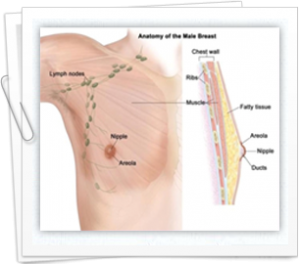Online CPR Certification Blog
Treatment for inflammatory breast cancer
Date: September 18th, 2014
 The typical breast cancer usually starts as just a single tumor. The lump on the underarm or breast area is usually hard and painless. However, inflammatory breast cancer is a rare kind of the disease and since it doesn’t show the usual symptoms of breast cancer, it can be gravely dangerous. Most cancers of the breast normally begin in the breast milk duct system and later grow to an enlarged mass. It is not usually possible to ascertain exactly where the cancer started. When you try feeling the breast, it is hard to find a single area where the mass begun on the breast as the whole breast has an abnormal feeling.
The typical breast cancer usually starts as just a single tumor. The lump on the underarm or breast area is usually hard and painless. However, inflammatory breast cancer is a rare kind of the disease and since it doesn’t show the usual symptoms of breast cancer, it can be gravely dangerous. Most cancers of the breast normally begin in the breast milk duct system and later grow to an enlarged mass. It is not usually possible to ascertain exactly where the cancer started. When you try feeling the breast, it is hard to find a single area where the mass begun on the breast as the whole breast has an abnormal feeling.
Trying inflammatory breast cancer can be very hard because when it becomes detectable, the cancer is usually at its advanced stage.
Understanding inflammatory breast cancer
According to health experts, the blocking of the lymph glands by the cancer cells is usually the onset of breast cancer. This is usually referred to as inflammatory since the breast is normally warm, red and even swollen with the problem being mistaken easily for breast infection. This cancer is more common in African- American women and younger women and comprises of between 1 and 5 percent of the cases of breast cancer resulted in US. The cancer usually attacks the breast’s lymph glands and later on spreads to multiple lymph channels on the skin. This in turn gives the breast an enlarged, dimpled and red appearance. Inflammatory breast cancer not only grows very rapidly, but it is also very aggressive when compared to other types of breast cancer.
Symptoms of inflammatory breast cancer
Here are a couple of symptoms linked to inflammatory breast cancer:
ü One of the breasts swelling suddenly without having any distinct lump.
ü A bruised skin with an appearance of being pink, bruised, dark or red in color. The breast can also have a dimpled texture like an orange or ridged.
ü When touched, the breasts feel warm or painful.
ü The nipple undergoes through some changes as well. In most cases, the nipple usually retracts or starts to point inward instead of outward.
Diagnosis of inflammatory breast cancer and diagnosis
Diagnosing inflammatory breast cancer is usually very difficult and since it spreads all over the whole breast, it might not show on mammograms. The technician only sees the entire breast being swollen. Biopsy is used to diagnose inflammatory breast cancer. Once detected, a couple of treatment options can be used including chemotherapy, radiation therapy and surgery and even hormonal and targeted therapy. When diagnosed early, it is able to treat the cancer and chances of survival are thus improved. Remember that you are highly likely to notice symptoms of inflammatory breast cancer before your doctor performs any test. In such a case, you should contact your family doctor immediately.